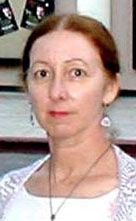|
San
Diego Jewish World
Thanks to Oprah Winfrey SAN DIEGO—In January of 2006 Oprah Winfrey announced that Elie Wiesel's Night would be a selection for her book club because she considered it "required reading for all humanity." Soon thereafter Wiesel appeared on Oprah's syndicated television show and accompanied her on a tour of Auschwitz. Although Night has been a perennial bestseller in the past thirty years, it shot up to number one on the New York Times' sales rankings for non-fiction paperbacks by February of 2006. Oprah's Boutique currently markets a DVD of the episode on the Auschwitz trip and Night tee shirts bearing the transliterated Hebrew passage from Leviticus 19:16, "Thou shall not stand idly by."
|
|||||||||||||||||||||||
|
5/21/07
SDJW Report (click on headline below to jump to the story) International and National *Night and Diary of a Young Girl switch places on all-time best seller list of Holocaust books *U.S. Sen. Carl Levin, Michigan Gov. Jennifer Granholm urge switch to alternative auto fuels *Poll finds that Israelis no longer believe Palestinians really want to achieve peace Daily Features Jews in the News Jewish Grapevine Regional and Local *Local Hindu leader tells Humanist Jews of the commonalities of the two belief systems *Two dead rabbis, father and son, symbolically reunited in San Diego Arts, Entertainment & Dining *Stay the Hand :Malashock's work in progress draws on biblical, other Middle Eastern roots For Your Reference San Diego Jewish Community Calendar San Diego Jewish Community Directory Advertisements Anderson Travel JFS Pete Earley Archives Return to Home Page |
For six years I have tracked the sales
rankings of Holocaust books on the Barnes and Noble website. I use Barnes
and Noble instead of Amazon because it controls a greater portion of the
book market. I include only works which have sustained their sales five or
more years after their publication. The list is fairly stable with only two
books having dropped off it since I began recording this data. These
bestsellers confirm Alan Mintz' insight that even for an event as singular
as the Shoah, "meaning is constructed by communities of
interpretation—differently by different communities—out of their own motives
and needs.
Barnes and Noble Sales Figures January 2007 (Ranking) 1. Night by Elie Wiesel [Oprah's Book Club] (44) 2. The Diary of a Young Girl by Anne Frank (423) 3. Survival in Auschwitz by Primo Levi (898) 4. Man's Search for Meaning by Victor Frankl (1,769) 5. Number the Stars by Lois Lowry (1,783)
6. The Devil's Arithmetic by Jane Yolen (3,883) |
|
|||||||||||||||||||||
|
U.S. Sen. Carl Levin, Michigan Gov. Jennifer
Granholm urge switch to alternative auto fuels
Where:
Doubletree Hotel - Mission Valley ∙ 7450 Hazard Center
Drive, San Diego, CA 92108
When: Tuesday, May 22, 2007 ∙ 11:15am - 1:30pm
Crazy: A Father’s Search Through America’s Mental Health
Madness, details Pete Earley’s
REGISTER NOW Information
& Registration ∙ (858) 637-3231
Poll finds that Israelis no longer believe NEW YORK (Publicity Release)—A new Israeli poll has revealed that clear majorities of Israeli Jews believe Palestinian Arabs want to destroy Israel and reject land-for-peace deals & unilateral concessions to Palestinian Arabs. The poll of 709 Israeli Jews, carried out by INSS (previously the Jaffee Center for Strategic Studies) shows the following:
ZOA National President Morton A. Klein said, "The results of this poll are as striking as they are important for it is often said that the Israeli public supports further unilateral concessions to the PA. In fact, the election of Hamas, the incessant barrage of rockets from territory evacuated by Israel in Gaza, the assaults and kidnappings from both Gaza and southern Lebanon and the smuggling in of massive amounts of offensive weaponry into Gaza by terrorists has persuaded the Israeli public that the Palestinian Arabs do not seek peace, that they continue to wage terrorism and incite their youth to hatred and murder of Jews in response to Israeli concessions, and that uprooting Jewish communities is no solution to these problems. "Israelis are no longer fooled by the false promises of Palestinian Arabs and understand now that their goal is Israel's destruction, as it was when the Oslo process began. Now we see that a majority of the Israeli public oppose the unilateral concessions and withdrawals advocated by Ariel Sharon, Ehud Olmert and Tzipi Livni and others." The foregoing article was provided by the Zionist Organization of America.
*U.S. Sen. Arlen Specter (R-Penn) says it is possible Attorney General
Alberto Gonzales will resign before a non-binding resolution of censure comes
before the U.S. Senate. Specter is expected to vote in favor of such a
resolution. The Associated Press
story by Hope Yen is in today's San Diego Union-Tribune.
The restaurant at Washington and Goldfinch Street has a new custom in honor of the firefighters who put out the blaze. Whenever someone spots a fire truck going by, red lights start flashing at the bar and anyone who orders a drink within the next two minutes can get it at half price... The Camiels and Dan and Jane Schaffer also got together recently with David & Elaine Gill, who as activists in the Greater Los Angeles Jewish Community recently were honored for their work in behalf of the Brandeis-Bardin Center in Simi Valley, which will be a campus of the University of Judaism for three-quarters of the year and home for Camp Alonim during the summer.
director of the National Jewish Democratic Council, has been
in a running dispute with a writer for Commentary magazine over the
latter's contention that the Democratic party is starting to tilt toward the
Palestinians. Here is a link
to Forman's refutation of that charge...
CARLSBAD, Calif. —Jews and Hindus have shared common bonds and have lived together peacefully for over 2000 years. This fact was brought out by Dr. Lalitha Subramanian during her talk following Saturday morning Shabbat service of the Humanistic Jewish Congregation of San Diego on May 19 at the Carlsbad Women’s Club.
Cochin They are accepted and treated with respect. During WW II 5000 Jews were welcomed into Calcutta when they fled Burma to avoid the advancing Japanese. In March 2005 Chief Rabbi Shloma Amar decided to recognize the members of the Bene Menasha community as descendants of the ancient Israelis. An interesting connection
was made between Humanistic Judaism and Hindu philosophy. During the opening
Shabbat service, led by Cantor Debra Davis, one of the songs sung by the
congregation was called Efo Ori? The words, translated to English, are
as follows: Where is my hope? My hope is in me. Where is my strength? My strength is in me and in you. Dr. Subramanian referred to the verse of this song as a connection between Humanistic Judaism and Hindu Dharma. This is the same philosophy, Hindu Dharma, which speaks of “self-realization” and that eternal truth is inside oneself. She went on to say “Let every human being be happy and free of disease. And let every individual’s well being be assured. Because of this Hindu Dharma like Judaism is not a proselytizing religion. These tenets of Hindu philosophy make India a tolerant society.” Dr. Subramanian spoke primarily of the philosophy of Hinduism. On several occasions she spoke in Sanskrit immediately translating it into English which added to the interest in her comments. She spoke of individuals throughout history, including some still with us, who have made their marks on Indian society by their adherence to the tenets of Hinduism. One of these, presently with us, is “Amma” meaning “mother.” It has been reported that she has hugged about 25 million people throughout the world and brought hope to them all. Once asked how she could do this in view of the differences in appearance or mannerisms of people Amma reportedly replied, “When the bee hovers over a flower it does not see the differences only the amount of honey therein”. For all her activities and her impact on society Amma received the 2002 Ghandi Kim Award for “Non-violence”. She concluded her presentation with the following prayer: “May all beings in all the world be happy. Peace, peace, peace.”
Dr. Subramanian is the
co-founder of Amma Satsung of San Diego-a branch of the world-wide “Fellowship
of Hindus." SAN DIEGO—A father and a
son, both rabbis, were symbolically reunited in San Diego this week, many years
after both of them died.
Although Heilpern had been a
prominent enough rabbi in the years following World War II and preceding the
establishment of the State of Israel to be sent by England's chief rabbi, Joseph
Hertz, to Cyprus to minister to Jewish refugees who had been captured by British
authorities while trying to immigrate to British Mandatory Palestine, Heilpern's
later years in the United States were shrouded in mystery.
Stay the Hand: Malashock's work in progress John Malashock, choreographer, former dancer, and Artistic Director of Malashock Dance, has been an important member of the dance community in San Diego for nineteen years. He received his BA in dance in 1975, danced with numerous companies around the world but most especially with the prestigious modern/contemporary Twyla Tharp Company appearing in The Catherine Wheel, Dance in America, Twyla Tharp Scrapbook as well as the film Amadeus. He is the recipient of four Emmy’s along with numerous other awards. In addition to teaching at his school, he has taught workshops with the Tharp Company, major universities in the United States and the American Dance Festival in Tokyo, Japan. He is recognized as a fellow of the Los Angeles/Israel Center for Jewish Culture and Creativity. When Malashock met Iranian born composer, Shahrokh Yadegari, the two recognized a kindred desire to explore and blend their artistic visions as well as their shared Jewish heritage in the hope of peace. It occurred to them that it would be possible to approach that dream by going back to a history before the germs of the present conflict arose. Yadegari is collaborating with Malashock beyond composing the music. He is also helping to develop the concept and cultural content. He has a BS (Electrical Engineering), a Master’s in Media Arts and Sciences (MIT) and a Ph.D in music from UCSD. He was artistic director of the Persian Arts Society, and is a member of the Department of Theatre and Dance at UCSD. His music has been played around the world. Malashock explains that conflicts and bonds occur on various levels, from differences between members of a family, to escalating into a national cultural divide. But differences can also blend into harmony without necessarily erupting into dissension. Exploring those differences and those harmonies – the ability or inability, for opposites to co-exist, is something that excites Malashock’s imagination. He describes Yadegari’s music as both ancient and contemporary at the same time – another exploration of opposites. The title Stay the Hand comes from the Biblical story of Abraham “staying his hand” when G-D saw that he did indeed intend to sacrifice his son, Isaac. This is a story in which all three Abrahamic faiths believe and an endeavor to find some common ground is a good place to begin a search for understanding. Malashock says that Stay the Hand is not about religion or politics, but about seeing if opposites can co-exist. It is possible that two things can be so opposed that they meet together on the far side. I attended the third of three evenings in which the first five parts of this choreographic work-in-progress were presented. It took place at the truly wonderful new studio in the dance complex: Dance Place San Diego at NTC Promenade. This is the completely refurbished result of a closed military base becoming part of the City of San Diego. Chairs were set around the studio (and it did my heart good to be in a studio again) and proximity to the dancers lent an immediacy to reaction and reflection. Between the sections choreographed to date, Malashock introduced the dancers as well as the composer (who was also present) and offered insights into the concepts he envisions and realizes through movement. He mentioned that it was hard not to go into religion because it is so pervasive to the history, but when he did, it was to find commonality, not differences. The work as a whole emphasized various connections between Persian and Jewish history – from earliest history such as the Purim story of King Xerses and Queen Vashti found in Jewish literature. The music is quite modern
but still has the haunting quality of Middle Eastern sound, antique but also
eternal. The vocalizations, both male and female, aided and abetted this
duality of new-old. I am not generally a fan of modern music, but I did both
enjoy the music for itself as well as how it was married to the dance. Malashock takes great care with choreographing hands, heads and eyes and the dancers showed this care emphatically. He says he uses hands purposefully not simply for shape or adornment. I love dance that cares for details. Weight was used for emphasis, but as well as pulled off center – caught and released. It was also used percussively, as a drumbeat, echoing the music. The groupings and twosomes fairly well mixed up gender expectations, men lifting women, but also women lifting men and women lifting other women. Most often, however, the two men partnered one another rather than the usual man/woman combination. When I mentioned this to Malashock, he said that this represented the two sides of the same – a mirror image duality. The fifth section presents the death of Abraham and the rapprochement of his sons, Isaac and Ishmael, at his funeral. I was most taken with the scene of Abraham lying in death with three women half kneeling around him – as if they were guardian angels. It reminded me of the golden statues found guarding the sarcophagus in the tomb of Tutankhamen. Malashock also explained that he brings to this the Zoroastrian concepts of good/evil, heaven/hell and darkness/light. He likes the tension inherent in those ideas. The final section was filled with both visible energy as well as conceptual energy; whirling bodies – circles opening and closing; resolving into an exploration of individual form and space and finally cooperative form and space. Malashock emphasized that this is project is still very much in flux, open to change of movement, concept, construct and performers. Premiere is expected spring of 2008. It will be fascinating to return and see what grew from this most auspicious beginning. Dancers: Michael Mizerany, Greg Lane, Christine Marshall, Erica Nordin, Lara Segura, Erica Buechner, Marcos Duran.
American Manufacturing Initiative....
C. Tax Credits - Advanced Technology and Flexible Fuel Vehicles II. TRADE
A. Fair Trade Enforcement 5. Address Non-Tariff Barriers in WTO Negotiations – Direct the Administration to place non-tariff barriers on par with tariff barriers in negotiations at the WTO. Trade negotiators must ensure through explicit linkages that U.S. tariff barriers will not be reduced unless other countries tackle the non-tariff barriers they use to keep out U.S. products. III. HEALTH CARE A. Health Care Tax Incentives1. Catastrophic Health Care Expenses – Amend the tax code to provide federal catastrophic health care insurance to pick up 50 percent of health care costs above a certain threshold ($50,000 in 2006, for instance) for all workers with company-provided coverage for manufacturers operating in the U.S. 2. Health Care Expenses – Provide as an alternative to the current tax deduction for manufacturers a tax credit for a portion of health care premiums paid for their oldest active or retired employees (aged 55-64). 3. Early Retiree Health Care Tax Credit – Allow certain early retirees to receive an immediate 65 percent refundable health care tax credit, providing manufacturers some relief from these costs and therefore reducing manufacturing costs. IV. ADVANCED VEHICLE DEVELOPMENT
A. Initiatives for Longer-Term Advanced Technologies V. FUEL CONSERVATION AND BIOFUELS
A. Environmental Technology Innovation
4. Tax
Credit for E85 Infrastructure – Increase tax credit for installation of new
pumps (to up to 50 percent of cost, up to $50,000) and provide one-year
depreciation for new pumps. Establish tax credit for fuel blenders to encourage
E85 availability.
VI.
DEPARTMENT OF DEFENSE INITIATIVES
(Return to top)
7. Maus by Art Spiegelman (4, 935) 8 Dawn by Elie Wiesel (5921) 9. The Hiding Place by Corrie ten Boom (6,122) 10. I Have Lived a 1,000 Years by Livia Bitton-Jackson (7,054)
1. The Diary of a Young Girl by Anne Frank (283) 2. Night by Elie Wiesel (481) 3. Man's Search for Meaning by Viktor Frankl (742) 4. Number the Stars by Lois Lowry (1,808) 5. Survival in Auschwitz by Primo Levi (1,858) 6. The Rise and Fall of the Third Reich by William Shirer (2,809) 7. The Hiding Place by Corrie ten Boom (2,950) 8 The Devil's Arithmetic by Jane Yolen (3,457) 9. The Sunflower by Simon Wiesenthal ( 4,181) 10. Maus, by Art Spiegelman (5,036) Wiesel fit the role Oprah's guests often play,—namely, someone who has persevered and transcended a terrible adversity. Contemporary American society celebrates those who overcome misfortune and grow emotionally stronger for having done so. For many Americans, the Holocaust beckons as the ultimate test of endurance which endows survivors with special insights into how their experiences can inspire others to beat addictions, cope with handicaps, or deal with personal tragedies. The questions Oprah posed to Wiesel in an earlier interview indicate she was searching for a silver lining in his darkened past: "Despite all the tragedy you've witnessed, do you still have a place inside you for gratefulness?" "Does having seen the worst of humanity make you more grateful for ordinary occurrences?" "Did you come out of the horror of the Holocaust with your ability to love intact?" In an article in Commentary, Presbyterian minister Christopher Leighton worried that many Christian readers of Night interpret it within their own religious framework of death and resurrection. He contended that "where Jews find evidence of God's absence, Christians discover, in the midst of anguish and darkness, a confirmation of God's redeeming presence." Surveying the short reviews of Night posted by readers on the book's Barnes and Noble webpage indicates that Leighton's concern is unfounded. Over 90% of the responses characterize Night as a compelling document of the horrors inflicted upon the Jews at Auschwitz. Conversely, very few impose a Christian meaning on Wiesel's agony. The increased prominence of in Night has redounded to the benefit of Wiesel's second novel Dawn which attained top ten status for the first time when it was republished in 2006. Dawn explores the moral qualms a Jewish survivor has about killing a British hostage as retaliation for the execution of a Zionist activist by the Mandatory authorities in postwar Palestine. Dawn is the sole book among the perennial top-ten Holocaust bestsellers which is primarily concerned with the ramifications of the Shoah on the struggle for Israeli independence. Unlike Leon Uris' Exodus, Dawn hardly can be construed as a heroic Zionist saga. As Ted Estess has observed, "Wiesel suggests that if one is never again to be a victim one must relinquish the ideal and illusion of innocence." I coded the responses of readers of Dawn on the Amazon.com website to assess how they understood the novel. About forty percent sympathized with the Zionist cause for which Elisha, the protagonist of Dawn, is fighting. Yet nearly thirty percent saw analogies between Elisha's rationale for killing the hostage and contemporary terrorism. One reader remarked, "It is fascinating to see words come from the mouths of these young Jewish partisans that would fit equally well in the mouths of Palestinians today." Of course, Wiesel rejects such moral equivalency and grounds Elisha's dilemma in a reverence for life that does not lend itself to justifying indiscriminate suicide bombings. Nevertheless, readers filter texts through their own experiences, knowledge, and political convictions. The Diary of Anne Frank holds the distinction of being the sole book that surpassed the popularity of Night before Oprah stamped the latter with her heksher. It remains the book most assigned for high-school units on the Holocaust. While the threat of Jews being arrested and deported lurks in its background, the diary foregrounds Anne's aspirations to become a writer, her adolescent clashes with her mother and sister, and her pubescent first love. Anne's optimistic belief that "people are really good at heart" softens the impact of the arrest of the Franks and their friends that ends Anne's entries. Her underexposed Jewish identity universalizes her story just as her father had intended when he abridged her diary. Teachers still prefer the original version of the The Diary of a Young Girl to the definitive edition. Only a quarter of readers responding to The Diary on Barnes and Noble's website mentions Jews at all while another quarter refers to the Holocaust in generic terms. Nearly forty per cent gush with an appreciation of Anne's adolescent awakening, courage, hope, or writing ability. The allure of Anne's teenage metamorphosis in such claustrophobic conditions persists even though a fourteen page postscript highlighting the history of the Shoah and what happened to the Franks and their friends has been added to the diary. The definitive edition of the diary would rank number six on my list if I had included different versions of the same book on it. Thirty percent longer than the original, it restores Anne's more explicit passages about her budding sexuality, Jewish faith, and resentment of her mother, sister, and other residents of the Secret Annex which her father deliberately had omitted. The new material changes how readers understand the diary. 46 % identify Anne as Jewish; another 31 % recognize her as a victim of the Holocaust, Germany, Hitler, or Nazism. Only 19 % focus exclusively on her bravery, optimism, talent, or teenage outlook. One of every ten of them is an adult reading the diary for the first time or turning to the unabridged edition because he or she previously had read the original edition. Three other of the top ten selling Holocaust books are intended for children and adolescents. Two developments account for this: 1) the incorporation of the Holocaust into the secondary school curriculum; 2) the teaching of the Holocaust to younger pupils, even those in the third grade. The publisher of Lois Lowry's Number the Stars recommends it for eight to twelve year-olds. The book focuses on the uplifting story of how a Danish Gentile girl named Annemarie and her parents help the Jewish family of her best friend evade arrest by the Germans and escape to neutral Sweden on a fishing boat. There are moments of danger and even a concluding revelation that Annemarie's sister and her fiancé were killed for involvement in the resistance movement. Can an eight year-old fathom why the Germans were hunting Jews or how exceptional the Danish response to this threat was? A proponent of K-4 prejudice reduction and Holocaust education if it is age appropriate, Harriet Lipman Sepinwall reports hearing from a fourth grade teacher that she had assigned Number the Stars "to help her students learn to be rescuers and not bystanders." Conversely, Samuel Totten, maintains that "it is simply and profoundly inappropriate to introduce, let alone immerse, such young children to the various horrors of the Holocaust." The comments posted by juvenile readers of Number the Stars on the Barnes and Noble website divide evenly between those who appear to have some inkling of the calamity that befell the Jews and others who praise the book because it is an exciting story about the bonds of friendship. Compared to Number the Stars, Jane Yolen's The Devil's Arithmetic is far more graphic in its depiction of the violence of the Holocaust. Nevertheless, the publisher of the novel classifies it as appropriate reading for nine to twelve year-olds. Yolen transports a thirteen year-old Jewish girl from suburban New York to the Polish shtetl where her ancestors resided until they were deported to a concentration camp. The protagonist Hannah has become bored by Jewish history and rituals, but learns to appreciate both and assess the enormity of Hitler's crime against the Jews by experiencing their suffering firsthand. Hannah ultimately chooses to die in place of her cousin in a gas chamber because she is certain that she will be reborn in the future. When Hannah awakens in the present, she realizes that her aunt was the cousin who had been spared and that she herself bears the Hebrew name Chaya of the girl who had been gassed. Four out of five comments posted by readers reveal an awareness of the Holocaust. Some are fairly sophisticated in articulating the book's message of the imperative to remember the Six Million while others do not distinguish between the fictional and factual aspects of the book as evidenced in the following remark: "I felt like I was there living the Holocaust with Hannah/Chaya. It was cool." Livia Bitton-Jackson rewrote her autobiography Elli: Coming of Age in the Holocaust specifically for teenage audiences. In I Have Lived a Thousand Years: Growing up in the Holocaust, she recollects the major events from her original account of surviving Auschwitz, but eschews incidents and language that might offend the sensibilities of adolescents, Boards of Education, parents, and teachers. Its publisher Scholastic Inc. markets the book directly to schools. Bitton-Jackson addresses her readers as "the third generation" who need to know that the Holocaust "was neither a legend nor Hollywood fiction, but a lesson for the future." She warns them that her story delves into the misery and slaughter she endured and witnessed, but assures them that it also reveals "perseverance, loyalty, courage in the face of overwhelming odds, and never giving up." The comments posted by the readers of I Have Lived a Thousand Years testify to its author's ability to convey both these trials and triumphs to young adults. One such reviewer observes, "This book not only teaches how cruel the world can be, but it also demonstrates that determination and love can defeat anything." Benefiting from the teaching of the Holocaust in American secondary and higher education too, Art Spiegelman's Maus has crept higher on the top-ten list over the past five years. Its pioneering usage of a comic book format with animal characters to recount the story of a survivor and his troubled relationship with his son has placed it fourth among "primary" sources for high-school units on the Holocaust and third in college and university courses on the topic. The growing respect for comic books and graphic novels as adult fare has boosted Spiegelman's sales as well. In college courses Maus often serves as an example of how a serious representation of the Holocaust can be achieved in a visual medium associated with light entertainment. As one reader puts it, "By relating history through mice and the graphic novel format, Spiegelman can provide just enough distance to relate many of the details (of the Holocaust) which cannot be successfully told otherwise." Primo Levi's Survival in Auschwitz has supplanted Wiesel's Night as the memoir most assigned in college and university courses on the Holocaust. In a survey conducted in the 1990s, Night was required in forty-two percent of such courses and Survival in Auschwitz in twenty-nine percent. Based on syllabi currently posted on the internet, Levi's book has passed Wiesel's as the most required primary source. As my earlier discussion of Night suggests, professors might correctly assume that the majority of their students already have read it in high-school. The preferences of instructors may mirror the Levi renaissance evidenced by a spate of books recently published about him. Levi's rationalistic and universalistic perspective may resonate better in a university setting than Wiesel's distinctively Jewish outlook. Jonathan Druker contrasts the two in these terms: "Wiesel tends to focus on the particularity of the victims, European Jewry; Levi, discounting the ultimate significance of ethnic or racial difference, dwells instead on Nazism's affront to humanity." The internet blogs by readers of Survival in Auschwitz rarely mention that Levi was Jewish. Finally, Levi's concept of the "gray zone" of amoral compromises forced upon camp inmates correlates with the prevailing understanding of camp survival as an unrelenting series of "choiceless choices" between equally terrible alternatives. Though the consensus among Holocaust scholars is that survival in the camps depended on amoral conduct and good fortune, most American adults gravitate toward the more comforting message delivered in Viktor Frankl's Man's Search for Meaning. Frankl contends that internees who invested their suffering with some ultimate meaning improved their chances of withstanding demoralization and the death which inevitably ensued from it. Four editions of Frankl's book rank among the top-ten selling Holocaust books. In contrast The Diary of Anne Frank, Maus, and Night are the only other titles that would appear twice on my list if I had included different editions of the same book. Frankl empowers human beings with free will to respond positively or negatively to the tragedies they confront in their lives. He summarizes this credo in the conclusion of his book: In the concentration camps, for example, in this living laboratory and on this testing ground, we watched and witnessed our comrades behave like swine while others behaved like saints. Man has the potentialities within himself; which one is actualized depends on decisions but not on conditions." Frankl's appeal lies more in its therapeutic value for individuals coping with hardships. Lawrence Langer, a renowned analyst of survivors' testimonies criticizes Frankl for believing that everything which happens to individuals is part of their fate. Langer contends that such wishful thinking mitigates both the absurdity and ruthlessness of the German policy to rid the world of Jews. In his opinion, "Frankl writes as a healer, not as a historian, a psychiatrist whose professional task is to reconcile man with his moments of utter desolation and create a way of liberating the future in spite of them." Americans turn to Frankl to deal with their own adversities. In a 1991 poll conducted by the Library of Congress, Man's Search for Meaning emerged as one of the ten most influential books in the United States. In keeping with its affirmative philosophy, the latest edition of Man's Search for Meaning carries a forward by Rabbi Harold S. Kushman, the author of When Bad Things Happen to Good People. The niche carved out by Corrie ten Boom's The Hiding Place on the top-ten list points to a phenomenon that largely has been ignored by scholars of the Shoah,—namely the appropriation of the Holocaust as a modern Calvary for Christian evangelicals. The ten Boom family belonged to the fundamentalist wing of the Dutch Reformed Church. Although Corrie's grandfather and brother proselytized Jews, they did so out of a reverence for the "Old Testament" and a sense of religious kinship towards Jews whom they regarded as God's Chosen People and Jesus' ancestors. To them, the eventual conversion of the Jews would herald the Second Coming of Christ. Harboring Jews enabled Corrie and her family to witness Christ's boundless love through acts of compassionate courage. When the ten Booms were betrayed and arrested by the Germans, Corrie did not yield to despair at Ravensbrück. She considered her internment a test of faith and an opportunity to preach the Gospels to victims of a satanic regime. After the war Corrie embarked on a career as a globetrotting missionary sharing her wartime ordeal to exemplify the redemptive power of unconditional faith and forgiveness even for the Germans who bore responsibility for the deaths of her father, sister, and brother. Billy Graham recruited professional writers John and Elizabeth Sherill to assist ten Boom in authoring The Hiding Place which was published in 1971. Four years later he produced a feature film adapted from it which received widespread theatrical distribution. It remains one of the most popular videos marketed by Christian bookstores and websites. In 1997 The Hiding Place earned it a spot on top ten most popular Christian books in the United States. Last year Christianity Today named it a "landmark" book that has shaped the way evangelicals think and act. Fundamentalist Christian home and parochial schools often require their pupils to read The Hiding Place when they are studying the Holocaust. Educators Rebekah Irwin and Simone Schweber have analyzed the pedagogical approach employed at an evangelical school where this was the case. On the one hand, the teacher admirably hoped reading ten Boom's book would help her students "become more sensitive to others and have more empathy and compassion for other beliefs." On the other hand, by stressing the literalist Christian message imparted by ten Boom, the teacher portrayed God's initial election of the Jews as the reason why Germany selected them as victims and the righteousness of ten Boom as the natural response of a true believer in a savior whose covenant of love for all human beings superseded Jewish legalism and particularism. Students simply received no instruction about the role of Christian churches and rulers in persecuting Jews in European history or about how the majority of Christians and their religious leaders failed to respond to the plight of the Jews under German domination in the exemplary manner of the ten Boom family. Histories of the Holocaust are conspicuously absent from the most recent top-ten list. Christopher Browning's Ordinary Men and William Shirer's The Rise and Fall of the Third Reich appear in the top twenty, respectively occupy the eleventh and thirteenth places. One could not imagine two more different works. Browning's dispassionate analysis of what motivated the members of the Reserve Police Battalion 101 to shoot thousands of Jews ranks behind Night and Survival in Auschwitz as the most assigned book in college and university Holocaust courses. In Hitler's Willing Executioners, Daniel Goldhagen disputed Browning's findings by asserting that Germans collectively were ensconced in an "eliminationist" strain of anti-Semitism that facilitated their transition from discriminating against Jews to eradicating them. While the reading public hailed Goldhagen's attribution of guilt to a deep-seated flaw in German national values, Browing's more nuanced interpretation has gained a larger following among history professors. Yet the enduring popularity of William Shirer's The Rise and Fall of the Third Reich indicates the average reader believes most Germans shared Hitler's racist anti-Semitism. Written shortly after the war, Shirer's journalistic account of Hitler's conquest of power traces German authoritarianism and anti-Semitism all the way back to Luther. The attraction to Shirer's depiction of Nazism as the logical culmination of German obedience and racism stems from the same impulse that catapulted Goldhagen's book temporarily into a blockbuster in the United States when is was first published. As Mitchell Ash has speculated, there is "the need on the part of many Jewish as well as non-Jewish Americans for simple binary images of good and evil with which to structure a moral conceptual grid of easy certainties, and to locate the murderous potential of modernity itself somewhere far from the good old USA." The Barnes and Nobles'
sales statistics serve as a barometer of why the Holocaust continues to
fascinate Americans. They reveal that the incorporation of the Holocaust into
the school curriculum has been a spectacular success story that started with
higher education, but gradually has spread to the secondary and primary grades.
The proliferation of Holocaust courses and curricular units encourages the
diversity of lessons teachers want their students to draw from the event. Those
teaching the youngest pupils hint at the scope of the catastrophe, but cushion
the shock of it by emphasizing how Righteous Gentiles shielded Jews from the
wrath of the Nazis or how kids like themselves maintained their loyalty to
friends and family in the ghettos and camps. High-school students are exposed
more directly to the horrors endured by European Jewry by empathizing with
protagonists like Livia Bitton-Jackson, Vladek in Maus, or Elie Wiesel
who survive despite all odds. The discomforting actuality is reserved for
university students and adults who must grapple with the dilemma of "choiceless
choices" and ordinary men capable of extraordinary evil. Jewish and Christian
perceptions of the religious meaning of the Holocaust differ radically as the
stark contrast between the crisis and certainty of faith in Night and
The Hiding Place dramatically reveals. The popularity of Frankl's and Ten
Boom's memoirs illustrates how many readers try to salvage a positive meaning
from the Holocaust. As scholar James Young has remarked, "In America, the
motives for memory of the Holocaust are as mixed as the population at large." |
|||||||||||||||||||||||
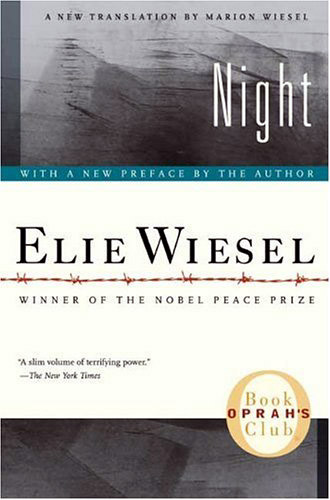
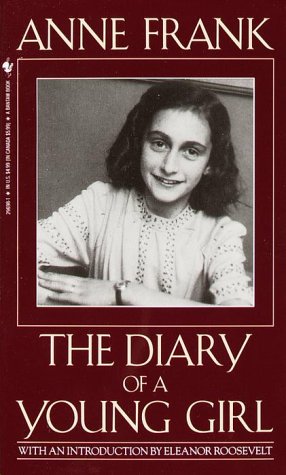
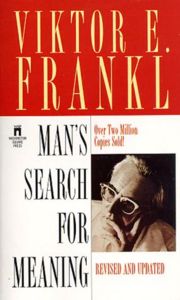


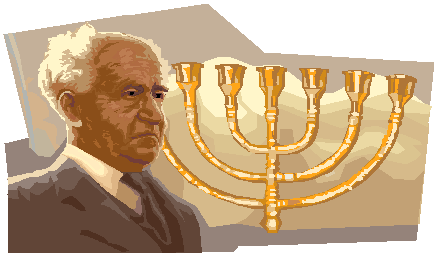 Jews
in the
News
Jews
in the
News
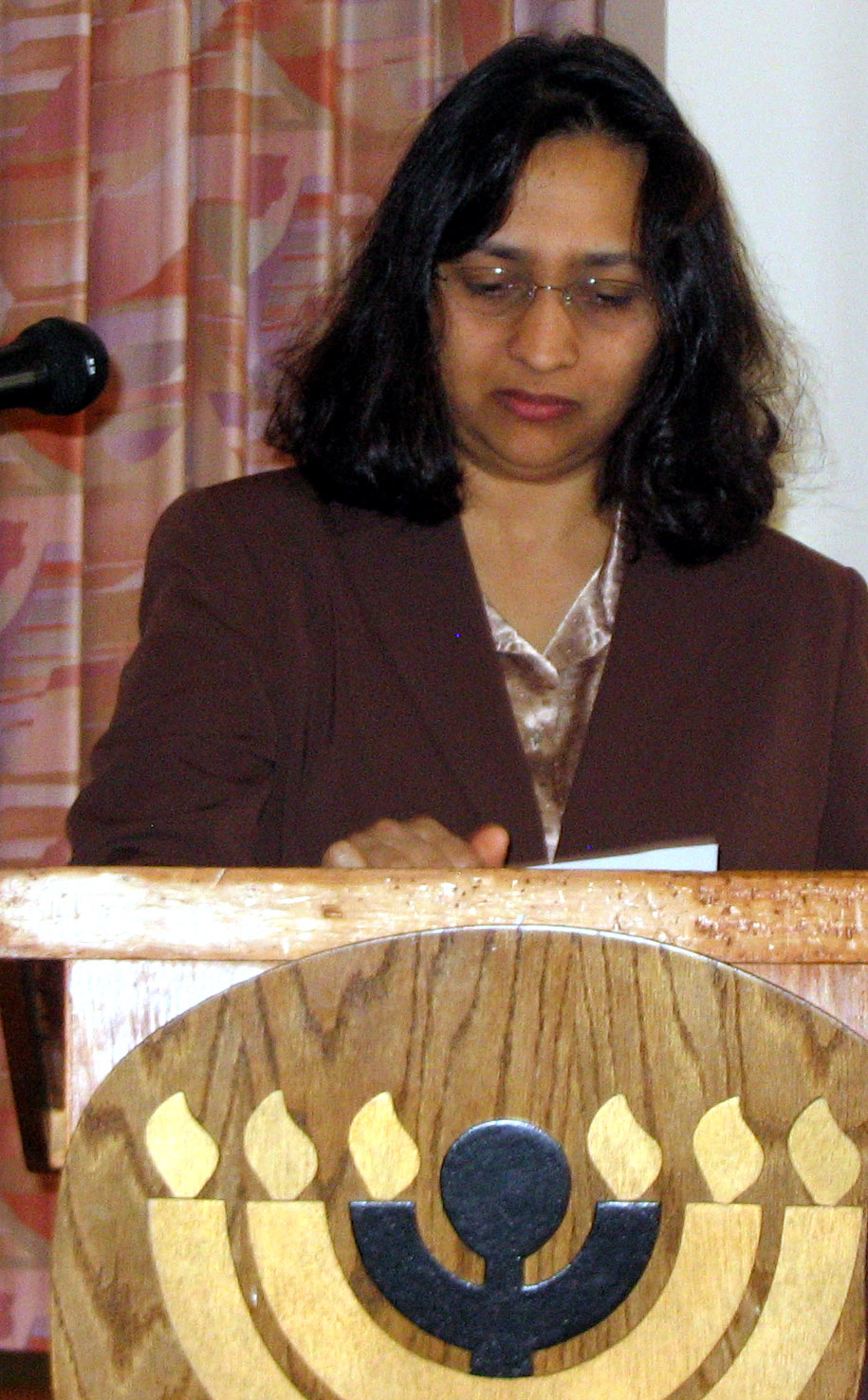


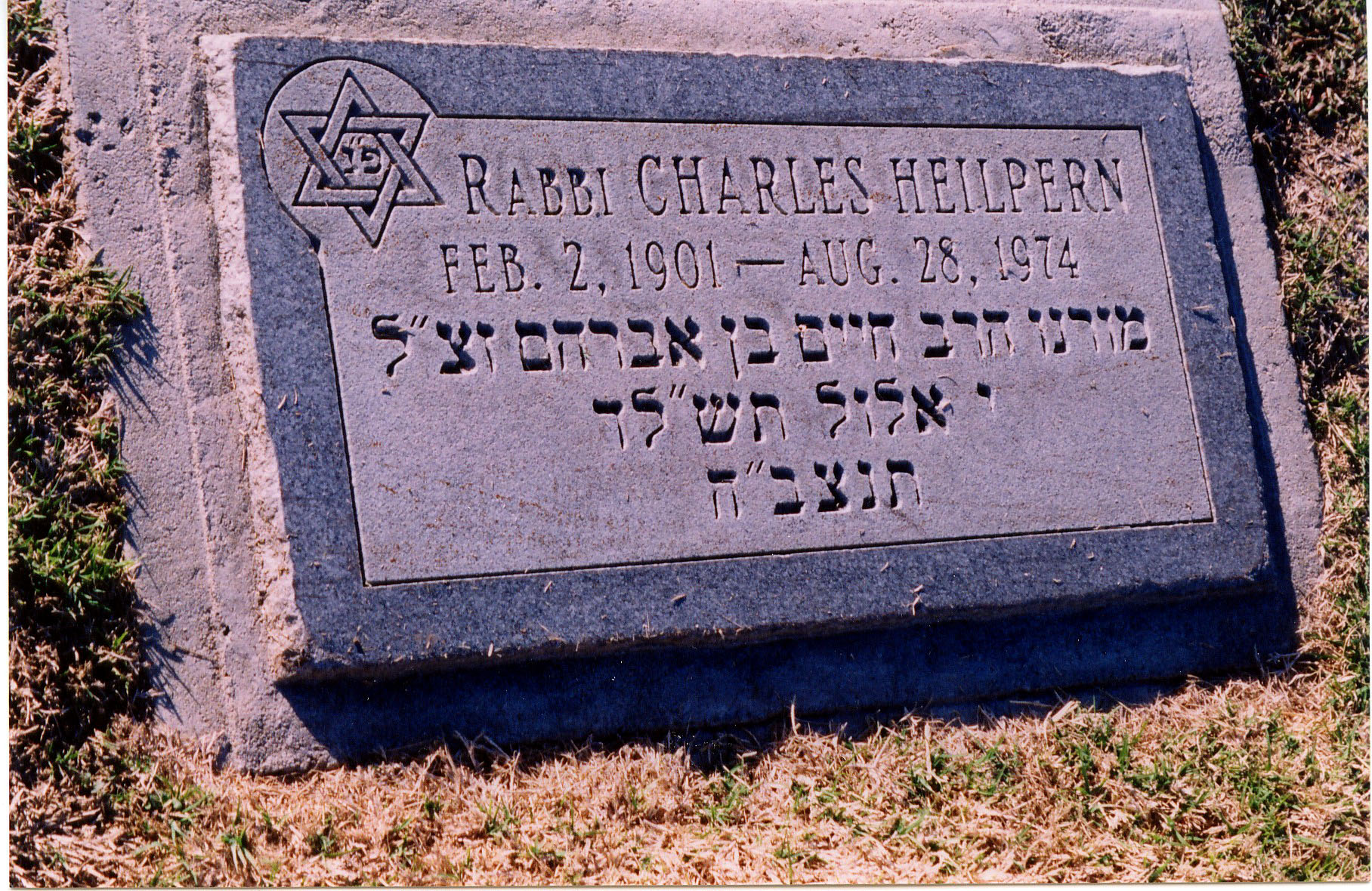
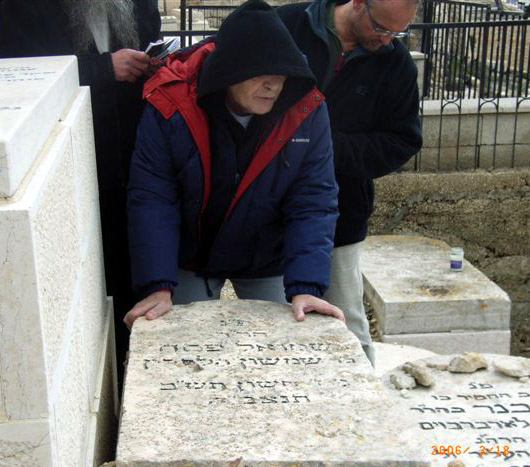
 Dance~The Jewish
Dance~The Jewish